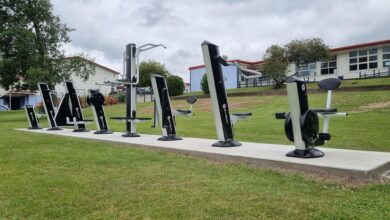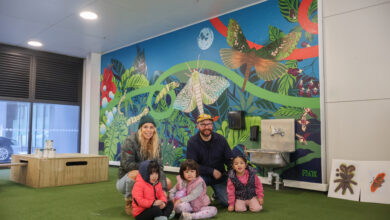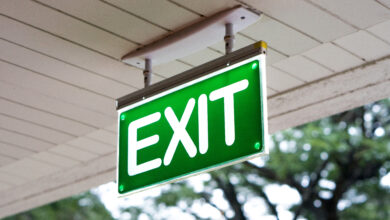Play on: Sports equipment to get everyone moving
From bats and balls to professional equipment and specialist surfaces, the right sports equipment can inspire young athletes at your school.
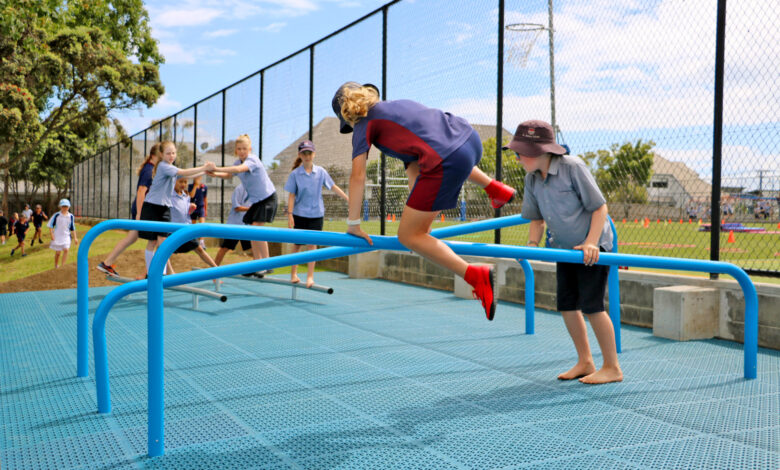
Sports play a vital role in school life. In addition to keeping people fit and healthy, sport also reduces stress, builds confidence, provides opportunities for achievement, brings people together and builds communities.
To fully unlock the benefits of sports for students, some basic equipment is required. From bats and balls to professional equipment and specialist surfaces, the right sports equipment can inspire young athletes at your school.
Read the latest print edition of School News online HERE.
Start with the basics
At its most simple, schools can purchase a variety of balls to harness interest in the many popular ball-sports like handball, football, netball, volleyball, rugby and basketball. Some balls can be multipurpose, though specialised balls are needed to maximise performance.
The benefits of ball sports are well known, especially for younger children, where ball sports develop hand-eye coordination, gross motor skills and balance.
For pre-teen ākonga and younger, adjusted size equipment may be needed as a standard adult size may be unsafe or inappropriate.
The benefits of age-appropriate equipment also go beyond safety and comfort. For budding athletes, an appropriately sized ball is vital to ensure proper form and technique. This is because ball size and weight matters for ball-handling, shooting and skill development. With the wrong sized ball, players compensate with poor form and technique.
For instance, with basketball, young players may need to use body weight instead of proper shooting technique, and these habits become hard to change once they are formed. In football, smaller sizes for younger age groups have even been internationally standardised to allow players to develop proper ball skills.
Karen Millar from Gymleader said equipment needs to be age appropriate. “Equipment should be tailored to the age and skill levels of students, with a strong emphasis on safety, ease of use, and long-term performance.
“When investing in gear for physical education, athletic development, or school sports teams, durability and flexibility are key.”
Kerry Masters from Hotshot Sports Equipment agreed that schools should look for durability, safety, and versatility.
“Equipment that supports both skill development and general fitness and can cater to a range of ages and abilities offers the greatest long-term value.
“Working with experienced suppliers who understand the education space helps ensure gear meets curriculum needs, safety standards, and diverse student requirements. With the right investment, schools can create active, engaged environments that support both physical health and academic success.”
Add some professionalism
Besides ball sports, athletics is a school rite-of-passage for many, and safe participation requires the right equipment. Starting blocks and hurdles lend a professional feel for training older students in sprints, middle to long distance running, relays, hurdles and more.
For high jump and pole vault, crash-pads are essential and need to be regularly checked and maintained to ensure they comply with health and safety standards. Equipment such as crash pads can also be used for other sports like gymnastics.
Good quality equipment can also be an asset for schools, as it can be hired out for community use along with school spaces like gymnasiums.
For older students training in regional and national sporting contexts, coaching equipment is essential for effective coaching sessions. Whistles and stopwatches are necessary for running and signalling drills. Cones and markers are used to create training courses and boundary lines. Certain disciplines also require specialised equipment, for instance, tackling dummies for rugby, ball machines for tennis and kickboards and buoys for swimming.
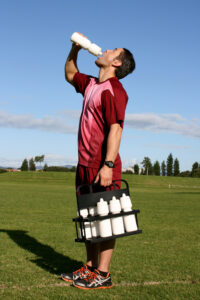
The team at Sports Distributors said extra coaching outside of regular school classes can be incredibly beneficial for young athletes who are committed to their sport. “It provides a more focused environment where individual skill development, game understanding, and confidence can really thrive. Students also learn valuable habits like goal setting, time management, and resilience—skills that benefit them beyond the field or court.
“For school sport coaches, having a solid toolkit makes all the difference. Essentials like whistles, stopwatches, cones, and clipboards might seem basic, but they help keep sessions organised, efficient, and engaging. These tools aren’t just for competitive training—they can enhance PE lessons for all students by promoting structure and clear communication.”
“Storage is often an overlooked part of running a smooth sports program,” Sports Distributors said. “Compact trolleys, mesh ball bags, and stackable bins—like those used in many school PE departments—can help keep gear organised and easy to transport. Wall hooks for bibs and bags are great space savers. The key is creating a system that makes it easy for students and staff to access and return gear—keeping things both tidy and time-efficient.”
Outdoor gym facilities
Outdoor gym facilities are another option that add value for the community and help unlock strength and wellness development for students. Many schools may have elements of an outdoor gym already in place, such as pull-up and parallel bars. More specialised outdoor gym equipment includes chest presses, balance boards, rowing and elliptical machines.
There are varied options available, and specific machines may be more suited to your community or school needs. For instance, strength options like bench and leg press may be good options to supplement sports team training. If you’d like to encourage more cardiovascular activity in students, an elliptical or stationary bike might be better. You can also combine machines to create a suggested workout for users.
Park Supplies & Playgrounds noted that outdoor gym facilities in particular offer “significant benefits for students’ health, well-being, and social development.
“Regular access encourages active lifestyles, helps to combat obesity, and improves cardiovascular health. The dynamic outdoor environment increases engagement with physical activity and promotes enjoyment of exercise, reducing stress and improving mood, concentration, and academic performance. These facilities also aid motor skill development and encourage teamwork and social interaction among students.”
Ms Millar added that outdoor gym facilities make movement and fitness accessible for students. “Outdoor gym facilities offer huge benefits for students, giving them space to move, play, and train beyond the classroom. They’re proven to boost physical wellbeing, support mental health, and encourage social interaction. For schools, they provide year-round access to movement and structured activity, even outside traditional PE lessons.
“Schools should ensure that installations comply with New Zealand’s safety standards and are built for high-usage environments.”
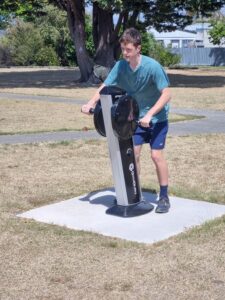
Mr Masters from Hotshots Sports Equipment added that many schools are finding outdoor gym facilities to be a valuable asset. “They provide an inclusive, accessible way for students to stay active—before school, during breaks, or within PE lessons. Regular physical activity in these spaces not only supports strength, coordination, and confidence, but is also proven to enhance concentration, reduce stress, and improve overall academic outcomes.
“Movement boosts brain function, and schools that prioritise fitness often see benefits in classroom focus and student wellbeing. Outdoor gyms help normalise exercise as part of daily life—not just competitive sport—making physical activity more appealing to a wider range of students.”
Safe surfaces
Sports surfaces provide a smooth, stable and even playing court for ākonga. This makes sports accessible and prevents sessions from being hazardous, especially in wet or slippery conditions.
Additionally, specialised features like cushioning and grip make participating in sports more comfortable and enjoyable, and reduce the risk of injury. Students are less likely to participate if they fear being hurt. Having a well-maintained sports surface can mitigate this and ensure everyone is able to gain the benefits of being active. One court can even be configured for many different games and purposes, creating extra value from the area.
The team at Park Supplies & Playgrounds said schools should prioritise safety and durability when purchasing sports equipment to ensure longevity and minimise maintenance.
“Inclusivity and accessibility are vital, ensuring usability for students of all abilities. Selecting age-appropriate and versatile equipment maximises space and activity options. Opting for quality and compliant equipment from reputable manufacturers is crucial, along with considering ease of maintenance to reduce long-term costs.
“All-weather surfaces like wet-pour rubber and rubber matting tiles offer resilience and low maintenance for year-round use,” said the Park Supplies & Playgrounds team.
Ms Millar said all-weather surfaces, and inclusive outdoor equipment for a wide range of ages and abilities, is one of the most exciting trends Gymleader has seen for schools.
“Multi-sport turf, rubberised surfacing, and accessible obstacle or fitness circuits make it easier for every student to participate, rain or shine.”
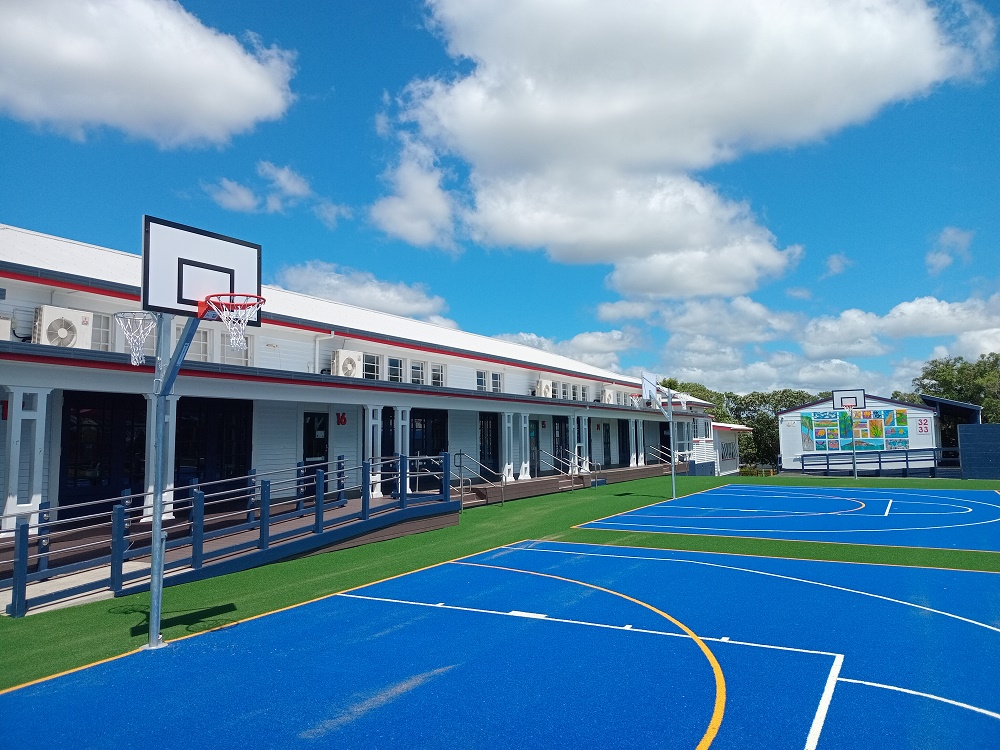
Helping everyone move
Recently, schools have moved towards a stronger focus on safe and inclusive outdoor environments. This might mean looking at the outdoor environment of your school and identifying barriers to being active outside. Something as simple as a handrail may improve access to outdoor spaces.
The Park Supplies & Playgrounds team said: “Inclusive design incorporates features for varied abilities, such as sensory panels and accessible ramps. Multi-use spaces combine play, sports, and fitness zones, while sustainable materials and aesthetic appeal are also gaining importance.”




